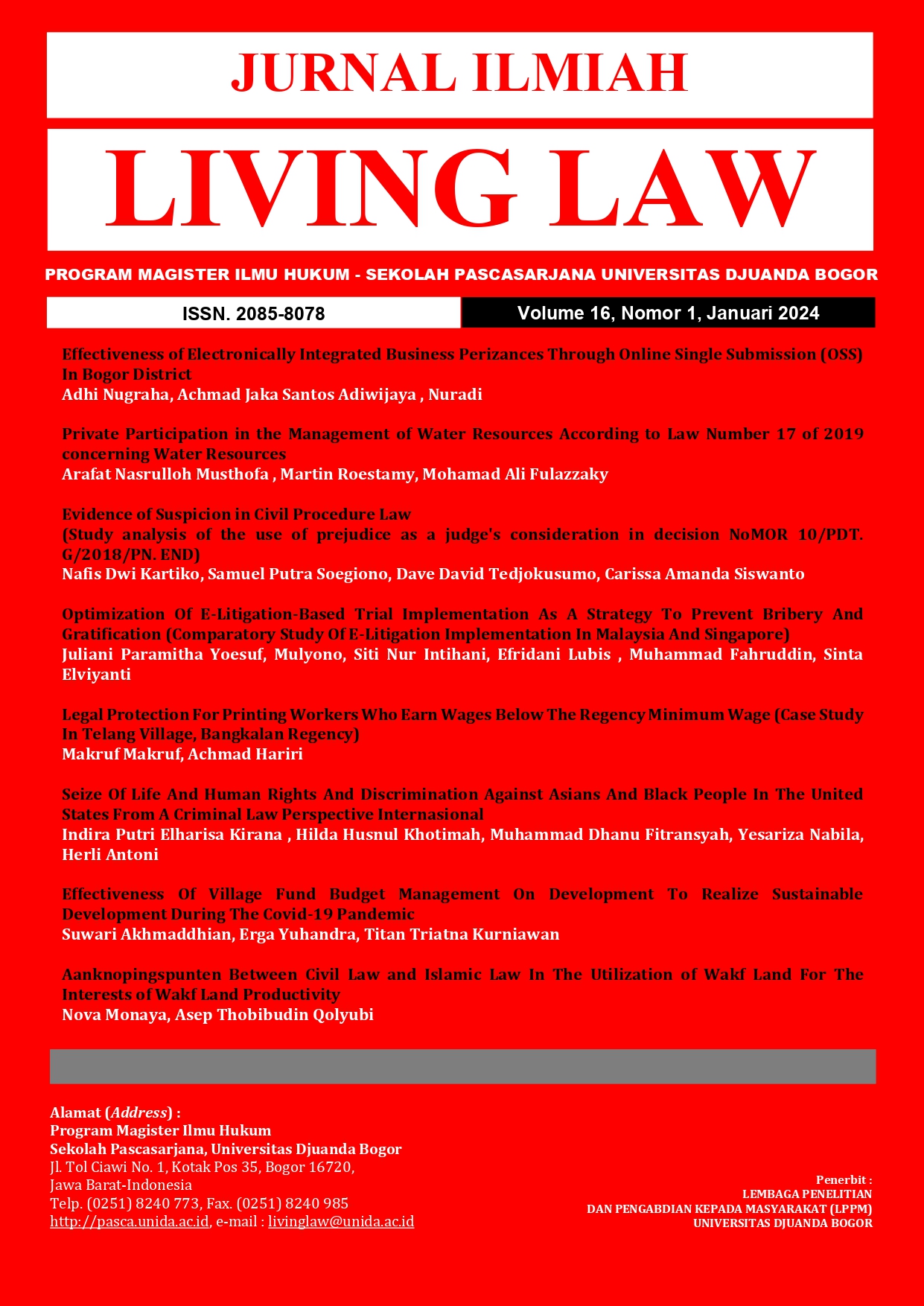Aanknopingspunten Between Civil Law and Islamic Law In The Utilization Of Wakf Land For The Interests Of Wakf Land Productivity
Main Article Content
Abstract
The aim of this research is to find solutions to legal problems or conflicts that have never been resolved between productivity and users of waqf land, namely with new ideas about land obtained from building buildings on waqf land by conducting a comparative study in Saudi Arabia. The method used in writing is the library method, namely research used to collect information and data with the help of various materials available in the library, with data collection techniques by reviewing books, journals, literature, notes, and several reports related to the problem you want. solved. Data were analyzed and presented descriptively. The results of the research, namely Aanknopingspunten between civil law and Islamic law in the use of waqf land for the purposes of waqf land productivity, can provide a solution to the rigidity of waqf land which prohibits it from being sold, gifted or inherited and guaranteed, so that waqf land does not become abandoned land because it has been managed in an appropriate manner. fairness.
Keywords : Aanknopingspunten, Islamic Law, Civil Law, Waqf Land
Downloads
Article Details

This work is licensed under a Creative Commons Attribution-ShareAlike 4.0 International License.
Authors who publish with Jurnal Ilmiah Living Law agree to the following terms:
- Authors retain copyright and grant the journal right of first publication with the work simultaneously licensed under a Creative Commons Attribution 4.0 International License that allows others to share the work with an acknowledgement of the work's authorship and initial publication in Jurnal Ilmiah Living Law.
- Authors are able to enter into separate, additional contractual arrangements for the non-exclusive distribution of the journal's published version of the work (e.g., post it to an institutional repository or publish it in a book), with an acknowledgement of its initial publication in Jurnal Ilmiah Living Law.
- Authors are permitted and encouraged to post their work online (e.g., in institutional repositories or on their website) prior to and during the submission process, as it can lead to productive exchanges, as well as earlier and greater citation of published work
References
Abdul Manan, Various Islamic Civil Law Problems in Indonesia (Jakarta: Kencana, 2006).
Achmad Djunaidi and Thobieb Al-Asyhar, Towards an Era of Productive Waqf: A Progressive Effort for the Welfare of the People (Mitra Abadi Press, 2006).
A. Djazuli, Hifzh Al-Ummah (Aims of Islamic Law) (Bandung: Sunan Gunung Djati State Islamic University, 2009)
Directorate General of Islamic Community Guidance Directorate of Waqf Empowerment, 2015).
Directorate of Waqf Empowerment Directorate General of Islamic Community Guidance, Bunga Rampai Waqf (Jakarta: Indonesian Ministry of Religion, 2006).
Fahruroji, 'Development of Waqf Assets in Singapore,' Equibrium, Vol. 3. No. 1 (2015).
Falahy, L. El. (2016). Transfer of Function of Waqf Land given Islamic Law and Law Number 41 of 2004 concerning Waqf. Al Istinbath: Journal of Islamic Law, 1(2).
Harahap, ND, & Syam, S. (2023). Utilization of Waqf Land by Profit Sharing According to the Imam Syafi'i School (Case Study in Simalagi Village, Hutabargot District, Mandailing Natal Regency). Journal of Legal Preferences, 4(2)
Ilyas, M. (2016). Istibdal of Waqf Assets from Islamic Law Perspective. Jurisprudence, 3(2).
Juhaya S. Praja, Philosophy of Islamic Law (Tasik Malaya: Faculty of Sharia, IAILM, 2004).
M. Fachrur Rozi, Collection of Legislative Regulations Concerning Waqf (Sidoarjo: Fauzia Amelia, The Waqf Phenomenon in Indonesia, Challenges towards Productive Waqf (Jakarta: Indonesian Waqf Board, 2016).
Uswatun Hasanah, 'Innovation in Waqf Development in Various Countries', Article, 2008 <https://www.bwi.go.id/166/2008/05/13/inovasi-pengembangan-wakaf-di-berbagai-negara/>.
https://www.bwi.go.id/8706/2023/04/16/index-wakaf-nasional-2022/
https://kneks.go.id/isuutama/29/pengembangan-digitalisasi-dan-integra-data-wakaf-nasional#:~:text=Based on%20data%20sistem%20Information%20Waqf, reaches%20Rp180%20trillion%20pe

